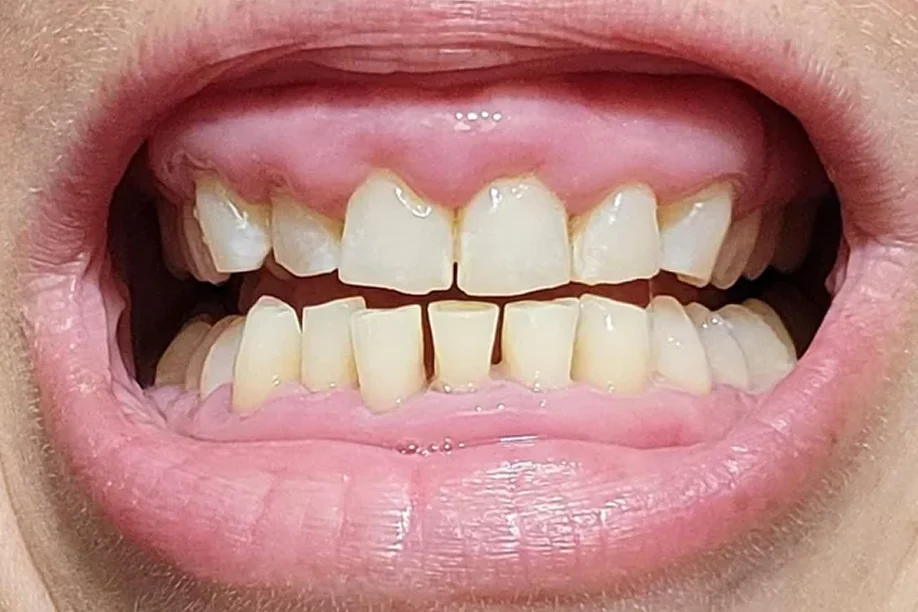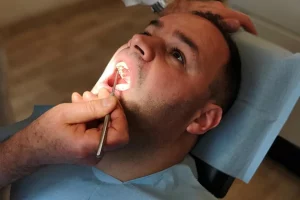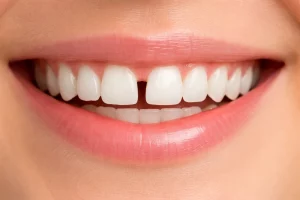Gums should frame your smile, not take it over. When they start looking puffy or swelling around parts of your teeth, then you might be dealing with gingival hyperplasia. It’s not just a cosmetic concern because the overgrown gums can trap food, make brushing tough, and set you up for cavities, along with the infections you didn’t ask for. Patients often wonder if it’s the toothpaste, braces, or something else causing it. Continue reading as we clear up what gingival hyperplasia really is, why it happens, and what you can do to keep your gums and your smile healthy.
What is Gingival Hyperplasia?
Gingival hyperplasia means your gums are growing more than they should. They can look thick, puffy, and may start covering your teeth. It’s different from the usual swelling you get if you skip brushing for a day. Here, the gum tissue itself increases and often needs a dentist to step in.
Gum overgrowth can trap food. So, it makes plaque and cavities more likely. It can also change how your smile looks, which is often why patients finally call us.
Symptoms You Shouldn’t Ignore
- Your gums may look swollen or feel tender.
- They might bleed when you brush or floss.
- You could notice bad breath that sticks around no matter how much you rinse.
Sometimes the gums grow so much that they make it hard to chew or speak clearly. If that’s happening, it’s time to get it checked.
What Causes Gingival Hyperplasia?
Several things can trigger gum overgrowth.
- Skipping flossing and brushing can leave plaque along your gum line, which can lead to overgrowth.
- Hormonal shifts during puberty or pregnancy can also make gums swell.
- Some health issues, like leukemia, can cause it too.
- Genetics can play a role, though you can’t exactly blame your genetics.
What Medication Causes Gingival Hyperplasia?
One of the most common reasons we see this in practice is medication. If you’ve wondered, “What medications cause gingival hyperplasia?”, here’s your answer.
- Certain seizure medications, like phenytoin, can cause it.
- Drugs used after transplants, like cyclosporine, can too.
- Some blood pressure meds, such as nifedipine and amlodipine, are also known to cause gum overgrowth.
If you’re on these, let your dentist know. We can help monitor your gums and work with your physician if needed.
Gingival Hyperplasia with Braces
Braces can make gum overgrowth worse. They make brushing tricky, and if you don’t clean around the brackets well, plaque piles up. That can trigger gingival hyperplasia in people with braces, especially teenagers.
If you’re in orthodontic treatment, then consult Oris Dental Center in Dubai, as we can show you the right tools and techniques to keep your gums in check.
How We Diagnose It
We look at your gums, your brushing habits, and your medical history. If needed, we may suggest blood tests to rule out any underlying health conditions. It’s straightforward, and it helps us decide on the right plan for you.
With advanced tools and experienced dental professionals at Oris Dental Center, we give you the best diagnosis report and curable treatments.
Treatment for Gingival Hyperplasia
Treatment depends on how bad it is and what’s causing it.
Mild Cases: Improving your brushing and flossing can help in mild cases, and we may also recommend using an antimicrobial rinse to lower plaque levels.
Medium Cases: Professional cleaning is often necessary. Scaling and root planing remove plaque and tartar that you can’t get with a toothbrush. If your meds are the cause, we may talk to your physician to see if there’s room for a switch.
Severe Cases: If the overgrowth is severe, we may need to remove the extra gum tissue with a gingivectomy. It’s a straightforward procedure that helps your gums return to a healthier state, making it easier for you to clean your teeth.
Preventing Gingival Hyperplasia
Brushing twice a day and flossing once daily are your best defenses. If your dentist recommends a mouth rinse, use it. Keep up with your dental checkups and cleanings.
If you have braces, then use an interdental brush or water flosser because it will help keep plaque at bay, reducing your risk of gum overgrowth while in treatment.
When to See a Dentist
If your gums start swelling or covering your teeth, don’t wait it out. It’s best to get a professional opinion. The sooner we look, the sooner we can prevent further problems.
At Oris Dental Center, we see gingival hyperplasia regularly, and it’s something we can manage. We’ll figure out the cause, clear up the overgrowth, and help you keep your gums healthy.
Takeaway
Gingival hyperplasia isn’t something to ignore. It can affect how you eat, speak, and clean your teeth. The good news is, it’s manageable. Whether it’s your braces, medications, or hygiene habits causing it, your dentist can help get your gums back in shape so they support your smile, not hide it.





